Five keys to understanding BBVA income statement
BBVA announced its earnings for the fourth quarter of 2015 today and also took stock of its annual financial statement. In 2015, the bank showed its "enormous ability to generate earnings in a complex environment, while moving ahead decisively in its transformation," said BBVA executive chairman Francisco González. These are the 5 keys you need to know to understand BBVA's performance over the last year:

1. Net attributable profit. BBVA increased its net profit to 2.64 billion euros, slightly more than the previous year (up 0.9%). Excluding corporate operations closed in 2015, BBVA earned 43.3% more than in 2014, at 3.75 billion euros. How can this difference be explained?
BBVA posted in its accounts the impacts of corporate operations recorded in 2015: capital gains of €705m net of tax originated by the various sale operations equivalent to 6.34% of BBVA Group’s stake in CNCB; the credit of €26m, also net of tax, for the badwill generated in the CX deal; the effect (practically neutral) of the close of the sale of BBVA’s entire stake in CIFH; and the impact of the valuation at fair value of the 25.01% stake held by BBVA in Garanti at the time when the acquisition of an additional 14.89% was completed (amounting to a negative €1,840m in the third quarter).
Francisco González: In 2015, BBVA showed its enormous ability to generate earnings in a complex environment, while moving ahead decisively in its transformation
2. Record earnings. Gross income, i.e. the difference between total earnings and expenses, reached a record high, both annually: 23.68 billion euros (representing an increase of 10.9%) and quarterly: 6.14 billion euros, 6.6% more than in the last three months of 2014. This figure is explained by the strength of the recurring earnings of the banking business (net interest income plus fees).

3. Increasing credit and decreasing risks. Gross customer lending increased by 18.1% to 432.86 billion euros, with growth in all regions. Meanwhile, BBVA risk indicators continued to perform positively. The NPL ratio continued to drop, ending the year at 5.4% vs. 5.8% a year earlier. The coverage ratio improved to 74%.
4. Capital strength. BBVA closed 2015 with a fully-loaded CET1 - the benchmark ratio for measuring the creditworthiness of an entity - of 10.3%. The company expects this ratio to reach 11% over 2017. The fully-loaded leverage ratio at the end of the year reached 6%, the highest level of its European peers.
5. The bank's transformation. "BBVA's transformation is having a profound impact on the customer's experience," said the company's CEO, Carlos Torres Vila. And the figures support his words: at the end of the year, 19.2% of new consumer credits in Spain were sold through digital channels. In Mexico this figure rose to 29.6%. Moreover, in 2015, BBVA expanded its digital customer base to 14.8 million, 19% more than in 2014. Of these, 8.5 million customers interacted with BBVA through their cell phones, 45% more than the previous year.
The level of customer satisfaction with digital channels is four times higher than with traditional ones. Customers that choose to operate through digital channels interact 15 times more with the bank.
In 2015, BBVA's earnings in Spain amounted to 1.046 billion euros, 21.9% more than in 2014
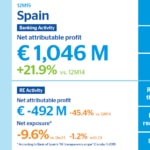
BBVA's growth in 2015 is based mainly on the strength of its business model and geographical diversification. These are the organization's main areas of activity in the markets where it operates.
In Spain, the integration of Catalunya Banc boosted gross lending and favored recurring earnings. In addition, the fall in real estate and loan-loss provisions increased the area's earnings in 2015 to 1.04 billion euros, 21.9% more than in 2014. If we include the real estate business, earnings in Spain amounted in the year to 554 million euros, almost 600 million euros more than in 2014.
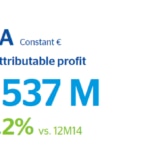
To better explain the trend of business areas that use a currency other than the euro, the exchange rates described below refer to constant exchange rates.
Thanks to the activity's good performance and cost containment in the U.S. in 2015 this area earned 537 million euros in 2015 (up 5.2%).
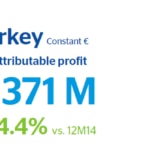
Earnings in Turkey reflect Garanti being accounted via the full consolidation method. In 2015, Turkey's net attributable profit in 2015 jumped 24.4% to 371 million euros.
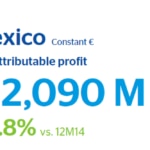
In Mexico, double-digit growth rates were recorded in both lending and customer funds. BBVA's earnings in Mexico in 2015 came to 2.1 billion euros (up 8.8%).
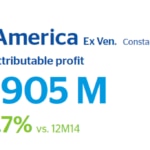
South America - excluding Venezuela - continued to report increases of over 15% in lending and customer funds. Net attributable profit for the full year came to 905 million euros (+ 8.7% compared to the end of 2014).